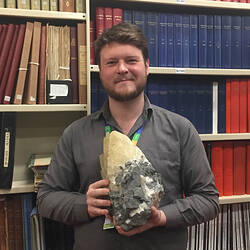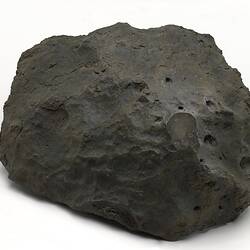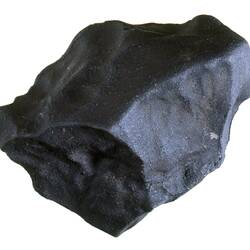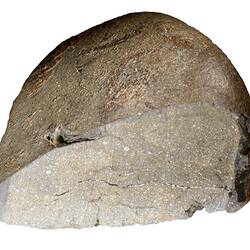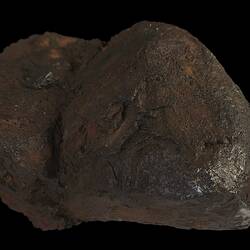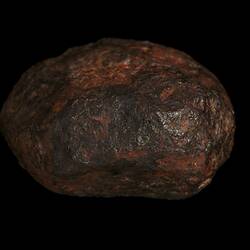Meteorites and Tektites/Impactites
The Meteorite Collection began in 1857 with the purchase by Frederick McCoy, the Museum's first director, of the first overseas specimens. The Meteorite Collection now contains approximately 400 specimens, representing over 200 finds and falls across the three main classifications of meteorites. This includes over 100 Iron meteorites over 250 Stony meteorites and over 20 stony-Iron meteorites. Specimens range in weight from a few grams to approximately a tonne. Many of the samples are slices from larger specimens.
The Tektite Collection dates back to specimens, collected by the Geological Survey of Victoria and deposited in the Museum in the 1850s and 1860s. At the time they were called obsidianites and believed to be volcanic in origin. Today the Tektite Collection consists of approximately 7000 specimens representing a variety of impact events. The largest component of the collection is from the Australasian strewn field, but there are also representative samples of other major global strewn fields. There are also rock specimens, such as shatter cones and impact glasses, related to Australian impact sites.
Significance
While Museums Victoria's meteorite collection is not as large as some of the other state museums it is notable for its diversity. Meteorites are of fundamental importance in understanding the composition of the origin of stars and the formation of our own solar system and the rarity of some of the specimens, especially Murchison, has made them sought after by researchers. The collection contains a nearly complete representation of known Victorian meteorites.
The Tektite Collection is known as one of the most significant in the world, largely through the pioneering work of George Baker and the Baker Collection. The collection was fundamental in understanding the impact event which formed the Australasian tektite strewn field, with the Uhlherr collection, being instrumental in resolving the age of Australian tektites. The generation of new analytical techniques it is likely that the collection will continue to be a valuable research resource.

